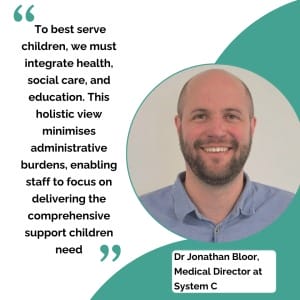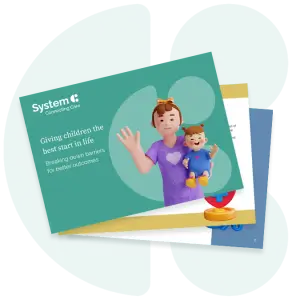Technology should facilitate information sharing, the effective use of that information, and the integration of workflows to address the specific needs of individual children. Sometimes we forget the intended purpose of technology, it should make our lives easier, and the lives of the people we are there to support. We also need to remember that whilst digital tools can be powerful enablers, they are not a panacea. Services must be structured around the child’s needs, with technology providing the capability to deliver that service.
Real-time information sharing across services enables healthcare professionals, social workers, and teachers to make informed decisions based on comprehensive, up-to-date information about a child’s well-being.

Enhanced early intervention capabilities emerge naturally from a connected approach, as patterns and potential issues can be identified sooner through comprehensive data analysis. For example, attendance data from schools can be correlated with healthcare appointments and social care interactions, providing early warning signs of potential safeguarding issues.
Multi-Agency Collaboration
An integrated system also enables improved risk identification and management through automated alerts and cross-service notifications, ensuring that vulnerable children do not fall through the gaps between different services.
By combining health records with social care data, practitioners can develop a more nuanced understanding of both clinical needs and family contexts, enabling more targeted and effective interventions. This comprehensive view becomes even more powerful when enriched with education data, offering insights into attendance patterns, academic achievement, and behavioural indicators that might signal underlying challenges.
Information Sharing Frameworks
By focusing on a child-centric approach, we can create information sharing frameworks that place the child’s needs at the centre of all interactions. This means designing systems that follow the child’s journey through different services, rather than forcing the child to adapt to fragmented service structures.
Unlocking Integrated Digital Systems with AI
As the government continues pushes to modernise from analogue to digital systems, artificial intelligence (AI) stands out as the innovation that can deliver immediate, meaningful improvements. Even small AI implementations from automated documentation to ambient listening can significantly reduce the administrative burden on health and social workers, freeing up valuable time for direct care. For children in the system, AI-powered tools can help identify risks earlier, personalise support plans, and ensure more timely interventions. This evolution in technology presents a valuable opportunity to not only enhance care delivery but also transform the daily work experience of frontline professionals while improving outcomes for vulnerable children. This dual impact on both practitioners and service users makes the adoption of AI solutions particularly compelling in health and social care settings.
Next Steps
Make sure to stay up to date with our latest news and blogs.
Have questions or need tailored advice from our experts? Don’t hesitate to reach out. Fill out our contact form today, and we’ll be happy to assist you.







